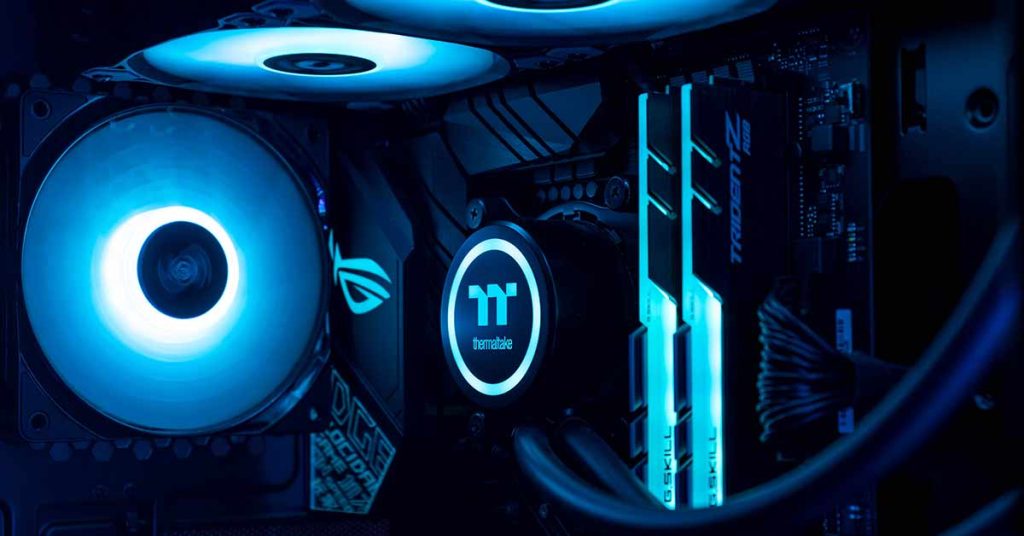While some of Photoshop’s functionalities may be used without a graphics card for many individuals, there are many others that do. So, today in this article we are going to learn do I need a graphics card for Photoshop, which Graphics card is best for Photoshop as well as we’ll learn about CPUs for Photoshop, and there are answers to your all questions.
A graphics card (sometimes called a video card, graphics processor, or GPU) is a component of computer hardware that generates the images you see on your monitor. As a result, it’s an inherently beneficial piece of technology for altering photos in Photoshop, which is mostly a visual tool.
While a suitable GPU allows you to get better performance and use more of the program’s capabilities, and incompatible GPU can cause crashes, performance problems, and display issues.
Related: 11 Proven Ways for Making Money with Photoshop.
So, if you’ve made the decision to buy a GPU, which one should you get?
If you’re not sure whether or not you need a graphics card, keep reading to learn more about what you can do in Photoshop with or without one!
At the end of the article, you’ll get answers to all of your questions.
Table of Contents
Graphics Cards That Are Compatible With Photoshop
With the ongoing evolution of computers and technology, more and more graphics cards are becoming compatible with the majority of applications (including Photoshop). However, not every graphics card is compatible.
According to Adobe, if your card fits the following two requirements, you can presume it’s compatible with the latest version of Photoshop:
It was released in 2014, or shortly thereafter.
It has a graphics processor VRAM of at least 512 MB. (This is the bare minimum needed for Photoshop.)
They also claimed that 2 GB or more of VRAM is recommended for Photoshop. So, if you want Photoshop to run at its best, you should choose a card with the most VRAM.
A complete list of the cards and card series that have been tested and found to be compatible with Photoshop can be found on Adobe’s FAQ page on the topic of graphics cards. (It should be noted that both the laptop and desktop versions have been tested.) If your card isn’t on the list but fulfills the criteria outlined earlier in this section, you may probably assume it’s compatible.

Graphics Cards That Are Not Supported by Photoshop
Photoshop has also issued a shorter list of unsupported graphics card series in addition to its list of suitable graphics cards:
- Older Intel HD cards (for example, those from 2000, 3000, or 4000 series)
- AMD/ATI 100, 200, 3000, and 4000 series NVIDIA GeForce 7000, 8000, 9000, 100, 200, 300 series
Some Photoshop features, such as the ability to work in 3D and the Perspective Warp option, are likely to be unavailable if you use one of these graphics cards. Other Photoshop capabilities may be affected as well, because the program’s efficiency may be harmed, which means you may face delays or crashes when attempting to do specific tasks.

When do we need a GPU in Photoshop?
If you use a lot of Photoshop functions, we recommend investing in a graphics card. Photoshop has a lot of complex features that you can only use if you have a graphics card. According to Adobe, the following are some of the capabilities that can only be used with a GPU and these features will be more efficient if we use a dedicated GPU:
- Perspective Warp
- Scrubby Zoom
- Flick Panning
- Birds Eye View
- Smooth Brush Resizing
- 3D
- Oil Paint
- Render – Flame, Picture Frame, Tree
If you plan on working with 3D graphics in Photoshop, a graphics card is normally required because this consumes a lot of RAM.
When working with Photoshop, it is generally better to have as much RAM as feasible. This will both simplify and speed up the editing process, resulting in fewer concerns about the program’s performance.
When does Photoshop Need GPU for Acceleration?
- Lens Blur
- Blur Gallery – Spin Blur, Field Blur, Iris Blur, Tilt-Shift, Path Blur
- Smart Sharpen
- Noise Reduction
- Select and Mask
- Select Focus
- Image Size – Preserve Details
- Camera Raw
- Artboards
Should I Invest in GPU for using Photoshop?
Yes, it is true! You can use Photoshop without a good graphics card, but doing so will reduce the program’s effectiveness and prevent you from using many of its features. However, if you only need Photoshop for a few easy tasks, you can definitely get away with a low-end graphics card.
Despite the GPU’s importance, it’s vital to realize that Photoshop’s efficiency and quality are determined by a multitude of elements, including memory, storage write and read speeds, and so on.
So, if Photoshop is still not performing at its best after utilizing a high-end, suitable graphics card, you might want to consider upgrading some of the other pieces of hardware.
Remember that, as we indicated at the start of this article, you may look at our article on the best computers and pieces of hardware for picture editing for more information on how to discover the best pieces of hardware that are compatible with Photoshop.
Related: 11 Proven Ways for Making Money with Photoshop.

Frequently Asked Questions | GPU, CPU, and Photoshop
Which GPU is best for Photoshop?
Although having a supported GPU is essential for Photoshop, the performance of that card will not have a significant impact on performance. Even when solely looking at GPU accelerated tasks, the considerably more modest RTX 3070 is within a single percent of the high-end RTX 3090.
Is the default graphics card good enough for Photoshop or do we need a dedicated card?
Even a low-end GPU will be almost twice as fast for GPU-accelerated operations. Photoshop can run with onboard graphics, but be aware that even a low-end GPU will be nearly twice as fast for GPU-accelerated tasks. Furthermore, most onboard graphics cards can only use 512-1024MB of memory, which is plenty for a single 1080p display, but we strongly advise buying a dedicated graphics card if you have a 4K display or several displays.
How much memory should a GPU have for using Photoshop?
While a higher-end GPU may not provide considerably better raw performance, having enough VRAM or video card memory for your projects is critical. Unless you have numerous 4K TVs, however, even 4GB of VRAM should suffice. Most customers should not be concerned about this because all of the video cards we currently offer for Photoshop have at least 8GB of VRAM.
NVIDIA or AMD, Which is better for Photoshop?
In terms of performance, NVIDIA currently outperforms AMD. We’ve also discovered that NVIDIA cards are significantly more stable (both in terms of hardware and drivers), which is why we prefer NVIDIA to AMD unless there’s an obvious advantage to utilizing an AMD card.
Which CPU is best for Photoshop?
The fastest CPU for Photoshop right now is Intel’s Core i9 12900K. In our benchmark, it outperforms rivals 12th Gen Core and AMD Ryzen 5000 Series processors by at least 5%.
How many cores make Photoshop faster?
Although Adobe is working on ways to make greater use of CPUs with additional cores, having more than 8 cores will currently only slightly improve performance. The CPU architecture is typically more important than the actual number of cores in most situations. Although Adobe is working on ways to make greater use of CPUs with additional cores, having more than 8 cores will currently only slightly improve performance. The CPU architecture is typically more important than the actual number of cores in most situations.
Intel or AMD CPUs, which are better for Photoshop?
AMD currently has a minor advantage over Intel. However, as both businesses release new products, this tends to fluctuate. This may vary from product to product or you can say model to model.

I’m a Graphic Designer with 5+ years of experience. Specialized in Adobe Photoshop.
Get Info About Any Photoshop Editing, Photoshop Manipulation, Logo Design, Flyers, Business Card, Cartoon Portrait and any type of work-related to Graphic Design and Photoshop Editing.




